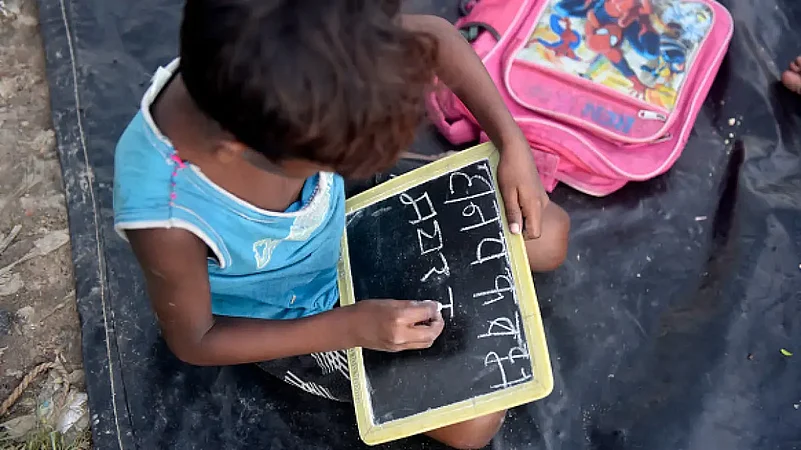As children, we have all grown up around the phrase - ‘Unity in diversity’. The expression perhaps is a reflection of the heterogeneity of India, a land of different cultures and tradition merging into one, were dialects are said to change every 11 kilometres. With the multiplicity of these cultures ruling the land for years, India has been home to thousands of languages. But not all have made the cut of time and policies. Over the years, the country has faced the death or irretrievable loss of many languages and dialects. And the loss of languages is always a cultural loss not just for a country's heritage but for all of human history.
In an interview with the Indian Express, renowned literary critic and activist Ganesh Narayan Devy had once noted that when a language dies, “a unique way of looking at the world disappears”.
But why do languages die?
After the 1971 Census, the Indian government had stated that any indigenous language, that is spoken by less than 10,000 people, would no longer be considered in the list of official languages of India. According to UNESCO, any language spoken by less than 10,000 people is potentially endangered. Since 1971, the Census has been counting only the languages spoken by people above the given figure, leading to a decline of 108 languages from the list.
According to Devy, founder-director of the Bhasa Research and Publication Centre, Vadodara and Adivasi Academy at Tejgadh, Gujarat, India may have lost 220 languages since 1961 and another 150 languages can disappear over the next 50 years.
Most dying languages are from the indigenous tribal groups spread across the country. A few of them would be the languages spoken by the nomadic people in Maharashtra, Karnataka and Telangana -- Wadari, Kolhati, Golla, Gisari.
In 2018, a report by UNESCO stated that 42 languages in India were heading towards extinction. And these were spoken by less than 10,000 people.
The languages or dialects which were considered endangered, include 11 from Andaman and Nicobar Islands (Great Andamanese, Jarawa, Lamongse, Luro, Muot, Onge, Pu, Sanenyo, Sentilese, Shompen and Takahanyilang), seven from Manipur (Aimol, Aka, Koiren, Lamgang, Langrong, Purum and Tarao) and four from Himachal Pradesh (Baghati, Handuri, Pangvali and Sirmaudi).
The other languages in the endangered category are Manda, Parji and Pengo (Odisha), Koraga and Kuruba (Karnataka), Gadaba and Naiki (Andhra Pradesh), Kota and Toda (Tamil Nadu), Mra and Na (Arunachal Pradesh), Tai Nora and Tai Rong (Assam), Bangani (Uttarakhand), Birhor (Jharkhand), Nihali (Maharashtra), Ruga (Meghalaya) and Toto (West Bengal).
The extinct languages of the Himalayan belt include Ahom, Andro, Rangkas, Sengmai, Tolcha.
Odisha, a state rich in tribal culture and heritage, also faces a severe threat of language extinction. The state that is home to nearly 60 tribes, is also home to 21 tribal languages and 74 dialects, which immensely contribute to the linguistic diversity of the state and are only spoken here, a report by Down To Earth states. Owing to the threat of extinction of these languages, the Odisha government appointed 3,385 tribal language teachers for the Multi-Lingual Education (MLE) programme introduced in 2006, to address the issue of language barriers faced by tribal children.
In Assam, there is a group of six Tai-Kadai languages, a dialect spoken by people of South-East Asia and China, that face imminent death. Two of them, Tai Ahom and Tai Turung, have already been reported to be extinct while Tai Khamyang has less than 50 speakers.
According to Devy, in the last 60 years, nearly 250 languages, including Bo language in Andaman and Majhi language in Sikkim, disappeared in the country. He states that there used to be languages called Adhuni, Dichi, Ghallu, Helgo, Katagi.
Experts believe that when a language dies, the knowledge system around also dies and becomes extinct. Thus the unique way of looking back on the world is also lost. With the language being lost, the speakers start migrating to different languages and regions.
Addressing the issue at an international level, the International Covenant on Civil and Political Rights (ICCPR, 1976), states, “In those States in which ethnic, religious or linguistic minorities exist, persons belonging to such minorities shall not be denied the right, in community with the other members of their group, to enjoy their own culture, to profess and practice their own religion, or to use their own language.”
















